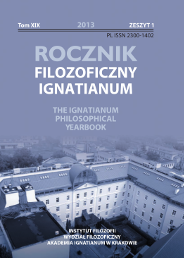Two Types of Rationality - Berkeley and Newton
Abstract
This paper discusses the dispute between G. Berkeley and I. Newton concerning the validity of classical mechanics. These two engaged in a discussion about infinitely small quantities --- infinitesimals --- which were used in differential and integral equations by Leibniz and Newton. Infinitesimals were both equal to zero and at the same time different from zero. The standard view is that Newton was right in defending classical mechanics. But if we accept a narrow sense of rationality --- as a procedure conforming to logical rules --- then Berkeley was right, for there are no numbers at the same time equal to and different from zero. The problem of infinitesimals was resolved in the 19th century, when the notion of limit was strictly defined. Seen in the light of this, Berkeley appears as rational, and Newton as pragmatic in his determination to preserve a promising physical theory.References
Berkeley G (1734), "The Analyst"
Bourbaki N (1980), "Elementy historii matematyki" Warszawa Państwowe Wydawnictwo Naukowe.
Davis PJ and Hersh R (1994), "Świat matematyki" Warszawa Wydawnictwo Naukowe PWN.
Nadel-Turoński T (1976), "Metafory matematyczne w teoriach fizycznych", Poznańskie Studia z Filozofii Nauki. (1), pp. 33-51.
Nadel-Turoński T (1972), "O tak zwanym <> matematyki", Studia Filozoficzne. (2 (75)), pp. 95-102..
Sady W (1990), "Racjonalna rekonstrukcja odkryć naukowych" Lublin Wydawnictwo Uniwersytetu Marii Curie-Skłodowskiej.
Struik DJ (1963), "Krótki zarys historii matematyki do końca XIX wieku" Warszawa Państwowe Wydawnictwo Naukowe.
Whitehead AN (1988), "Nauka i świat współczesny" Warszawa Instytut Wydawniczy PAX.
The Yearbook only accepts materials for publication that are free of all conflicts of interest, and that in no way involve conflicts over authorship, copyright, etc. The Editors will take action against any cases of plagiarizing, ghostwriting1, guest/honorary authorship2, etc. Where co-authored work is concerned, the Author listed first is expected to take responsibility for the submission, and is required to make clear the contributions of all of the Co-Authors involved. In the event of the publication owing its existence to funding dedicated to this purpose, this fact should be made clear: e.g. in any note of thanks/acknowledgement, or in a footnote, etc. Explicit notification should be given of any form of reprinting, with the appropriate evidence of permission to publish being furnished as required. Any impropriety on the part of Authors/Reviewers risks exposing them to appropriate responses from the relevant institutions.
______
1 This term refers to instances of a person who has made an essential contribution being omitted from the list of authors, or from notes conveying gratitude and/or acknowledgement.
2 This occurs when a person who has made either an insignificant contribution or no contribution at all nevertheless appears on the list of authors.





